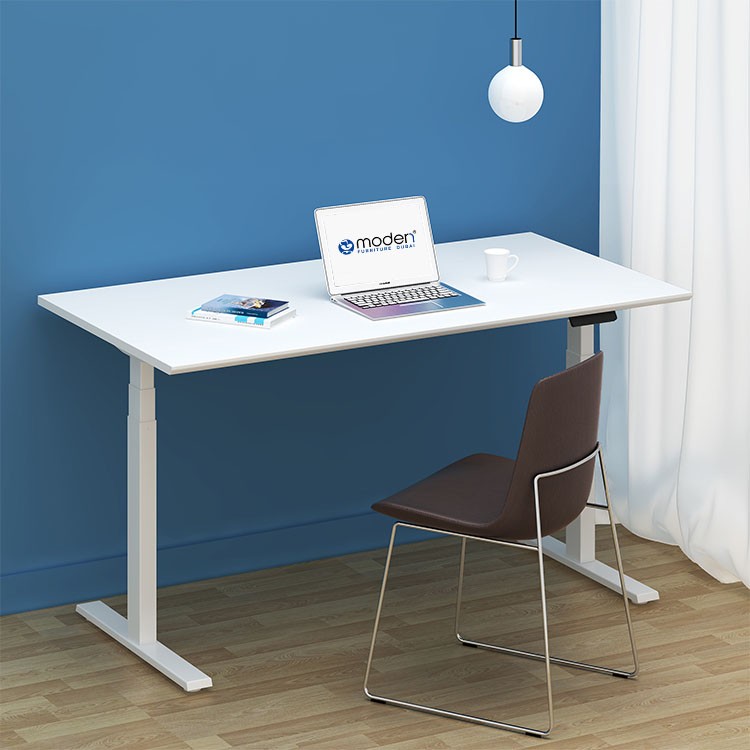
How to Choose a Desk That Adapts to Any Room Size
Introduction
A well-chosen desk can completely transform how a space functions—whether you're working from a tiny studio apartment or a large home office. When space is limited or constantly changing, flexibility becomes key. In this article, we explore how to choose a desk that seamlessly adapts to any room size, offering both practicality and style without compromise.
1. Focus on Adjustable Height Functionality
Desks with height-adjustable features, especially electric models, allow you to shift between sitting and standing. This adaptability not only supports ergonomic health but also fits into rooms with various setups and user preferences.
2. Consider the Desk’s Footprint and Shape
The shape and size of a desk dramatically impact how it fits into your room. Opt for rectangular or compact L-shaped designs that offer more surface area without dominating the floor space.
3. Prioritize Cable Management Features
Built-in cable trays or grommets prevent wire clutter, which becomes even more important in tight areas. Clean setups make small rooms look more organized and spacious.
4. Evaluate the Desk's Material and Finish
Light-toned surfaces or glass tops can visually open up smaller rooms, while darker, matte finishes can anchor larger spaces. Material choices affect both visual balance and how the desk blends with your existing furniture.
5. Look for Foldable or Modular Options
Foldable desks or those with detachable parts are great for multifunctional rooms. They can be tucked away when not in use or reconfigured to suit new layouts.
6. Check for Integrated Storage Solutions
Desks with built-in drawers or shelves help reduce the need for additional furniture. This is especially beneficial in smaller rooms where every centimeter counts.
7. Make Sure It’s Easy to Move or Reconfigure
Lightweight or wheeled desks are easier to reposition when rearranging your space. Even for large rooms, flexibility adds convenience and creative freedom.
8. Measure for Chair Clearance and Walking Space
When choosing a desk, don’t forget to factor in the chair and space to move around. Compact areas especially benefit from desks that allow enough clearance to avoid feeling cramped.
9. Balance Aesthetic with Practical Use
Choose a desk that looks proportionate in your space. In minimalist rooms, sleek lines and neutral colors can help the desk blend in, while bold designs might serve as a focal point in more expansive setups.
10. Choose a Desk That Supports Tech and Accessories
If your workflow involves monitors, tablets, or speakers, look for desks with sturdy tops and ample surface area. Even in small rooms, a desk that manages your gear efficiently is worth the space.
Additional Considerations When Choosing a Desk for Any Room Size
Adapt Desks to Corners or Unused Wall Areas
Utilize awkward corners with L-shaped or narrow desks to maximize function without overwhelming the space.
Use Standing Desks in Shared or Transitional Spaces
Height-adjustable desks fit perfectly in mixed-use areas since they can cater to different tasks and users throughout the day.
Choose Desks That Match the Room's Proportions
Scale matters—low-profile desks suit low ceilings, while more robust models fit better in open rooms.
Go for Compact Desks with Expandable Surfaces
Pull-out sections or side panels offer extra workspace only when needed, keeping things sleek otherwise.
Select Multi-Functional Desks for Dual Use
Choose desks that can double as consoles, vanity tables, or meeting spots, especially in tight or shared spaces.
Prefer Desks with Built-In Power Outlets
This minimizes the need for floor space-consuming extension cords and keeps your room tidy.
Match Desk Style with Room Decor
Coherence in design ensures the desk enhances rather than disrupts the room’s flow.
Don’t Overlook Legroom
Even compact desks should provide enough space for comfortable sitting and leg movement.
Think About Light Placement
Position desks near natural light or outlets for lamps, particularly in smaller rooms where artificial light may dominate.
Invest in Long-Term Durability
Choose desks made from high-quality materials that won’t warp or wear over time—saving you from replacements in evolving spaces.
Recommended Product:

-
Bugal Pro Series Dual Motor Electric Height Adjustable Standing Desk
A powerful yet space-conscious desk that combines height adjustability, minimal design, and tech-readiness—ideal for both compact and large rooms.
Final Thoughts
Choosing a desk that works in any room size is about flexibility, proportion, and thoughtful design. Whether you’re setting up a workstation in a small corner or designing a full-scale home office, the right desk adapts to your needs—without forcing you to compromise on comfort or productivity. It’s not just about fitting into your room; it’s about enhancing how you use it.
FAQ
Q: What type of desk works best for small spaces?
A: Compact desks with foldable parts, built-in storage, or narrow profiles are ideal for smaller rooms.Q: Are standing desks suitable for all room sizes?
A: Yes. Height-adjustable desks like the Bugal Pro Series are perfect for both small and large rooms due to their flexibility and ergonomic benefits.


